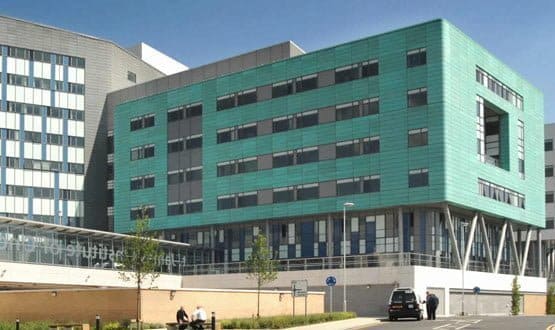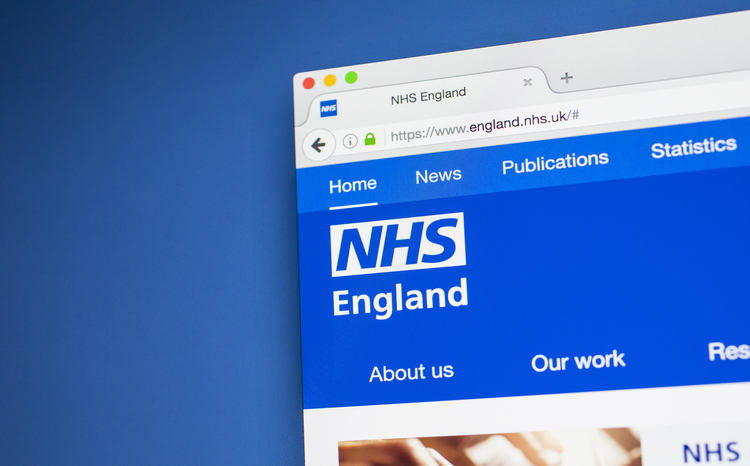Leedsing the way
- 4 April 2013

Leeds Teaching Hospitals NHS Trust approved an ambitious informatics strategy in 2011. Fast forward to today, and it has made many improvements.
The complete rewrite of the trust’s clinical portal, using open source code, and the recent procurement of a new imaging system are big steps towards the paper-lite, information sharing environment the trust is trying to achieve.
However, deputy director of informatics, Eileen Jessop, says it has come at a price. “We’ve got a £37m budget to last until 2017 and we’re already realising it’s not enough,” she says when eHealth Insider visits.
“We have to go back and get more. There will be continuing commitment to the projects, but we’re coming to the end of the money.”
The trust is also facing the issue of how much IT-based change it can cope with at one time. “We’re running the programme at pace, but how much change do we put this organisation through in one go?” Jessop wonders.
Portal to perfection
In spite of these issues, Jessop looks optimistically the projects in hand and, in particular, at the web-based portal, which is fronted by Dr Geoff Hall, an oncology consultant at the trust.
It forms the basis of the trust’s plan to create an electronic patient record by taking a ‘best of breed’ approach, in which it adds specialist systems to those in use already.
Dr Hall explains that the trust’s cancer wards have been using a portal for ten years. So when other departments asked if they could use it, he, an in-house team and experts from the University of Leeds decided to update it and re-write it, so they could.
“It wasn’t designed for others and we got to the point where we realised we had to rewrite it anyway, so we made the decision to make the trust-wide portal the development of the system.”
The result is an open source portal that links the trust’s different systems, so a clinician can see patient administration system data, discharge summaries and test results, with a single point of access.
Dr Hall says a lot of work has gone into making the portal fit for purpose and making improvements.
“In April we will release the next version of the portal, based on a restructured database in which we have begun to incorporate archetypes and so forth. This version will essentially be read-only, although the very earliest ability to enter data has begun to creep in,” he says.
The ability to enter data should be available in the autumn. “In outpatient clinics, I am now notes-lite; I don’t need to bring medical notes to clinic as I have what I need on the system. The clinic is almost all electronic,” Hall adds, as ironically, a trolley of filled to the brim with paper records is wheeled past his office door.
“At the moment, we have 200 islands of people, and nothing interoperates,” he says, acknowledging the interruption. “Systems are isolated and don’t talk to each other.”
As well as being a one-stop-shop for access to the trust’s systems, the portal also enables a clinician to view his or her own clinical outcomes.
“Now we can see outcomes straight in our inbox. We are able to analyse ten years of data and it takes 20 seconds to do a live survival curve. I can then put my results in context of national data,” Dr Hall says.
City-wide care
Open source and integration is at the heart of the trust’s informatics strategy. It also has a paper-lite project in collaboration with the primary care trust.
“The more we can digitise the more we can share,” says Jessop. “We have a shared vision across the city for the Leeds Care Record.”
The Leeds Care Record is fronted by the Leeds Health and Social Care Transformation Programme, a city-wide initiative.
The trust’s chief clinical information officer, Dr Tony Shannon, says the goal is to bridge the gap between health and social care.
“Lots of systems across the county don’t join up. We want to match up connection with the systems such as EMIS, TPP, Paris and social care systems,” he says.
“We’re talking to EMIS about sharing through the MIG [Medical Interoperability Gateway] route and we’ve got a pilot project we hope to go live with this summer.”
The project is linked to the portal, because it is where information will end up. “There’s a primary care record beyond hospital access and there’s the hospital records that’s beyond primary care access. There is no reason why we shouldn’t be able to share data,” says Dr Shannon.
He adds: “We don’t need to wait for the Summary Care Record to solve this. If GPs want to share data with hospitals they should be able to.”
A great big mess
The trust’s investment in software and systems has been supported by a big investment in infrastructure. Some 60% of the trust now has wireless connection, and at the beginning of the month wards will get computers on wheels.
“We’re not looking at mobile devices, the market is changing quickly and it’s not got the quality we are looking for yet,” explains Jessop, although she admits: “We are playing a little bit of catch up when it comes to technology.”
The wider Leeds Care Record project has also required a whole new infrastructure to unify and standardise IT with other NHS organisations. This has included the trust moving its directory from a Novell platform to Microsoft Active Directory.
But some things have not gone smoothly. “Integration is not easy, its’ a real challenge,” says Jessop, adding that storage has proved to be another headache.
“It’s a great big mess. We need to sort it out at once. We’re looking to make a computer room here at the trust a warranted data centre and also looking to get a support to get an off-site data centre.”
She also wonders what will happen to the drive for a more integrated NHS when the local strategic health authority vanishes on 1 April, as part of the ‘Liberating the NHS’ reforms.
Yet Jessop can still reel off a long list of other projects the trust is working on, including the implementation of results reporting and sending electronic discharge summaries straight into GP records.
We are all in this together
The trust is also committed to sharing its ideas; one reason it built the portal using open source software, and then released it to the NHS.
“If we’d spend three years developing a cure for cancer we would go around the country and share it. We wouldn’t charge for it. It’s the same thing, we should share best practice. I don’t think the NHS should try to make money from it,” says Dr Hall.
“It’s about harnessing the combined experience that’s in the NHS. Ultimately we’re all working towards the same aim.”
Dr Shannon adds: “If we make it open source it encourages others to pitch into the development. It’s much easier to make improvements and adjustments and build on it.”





